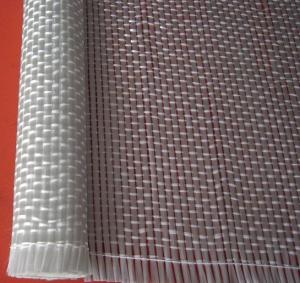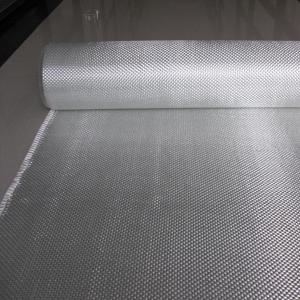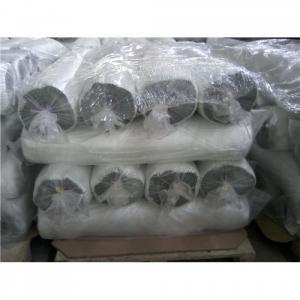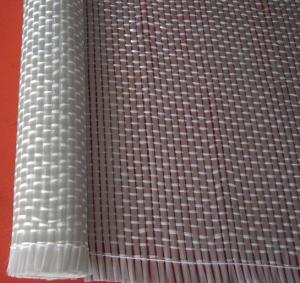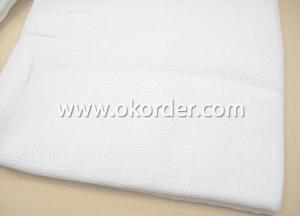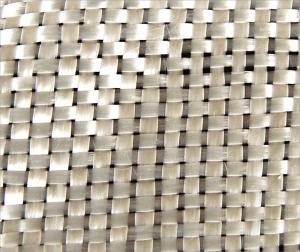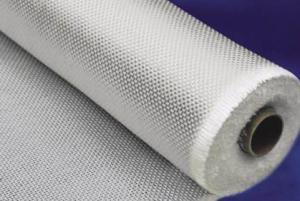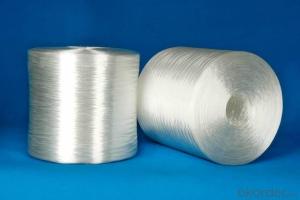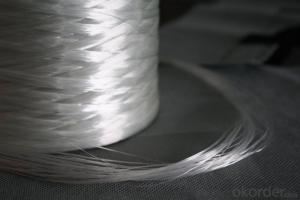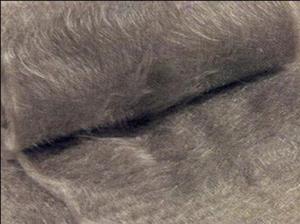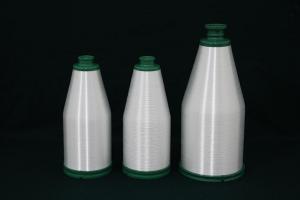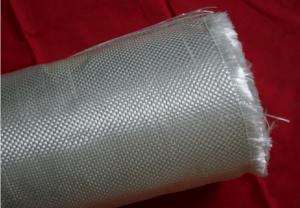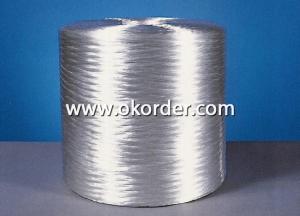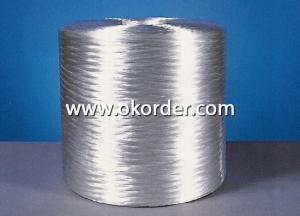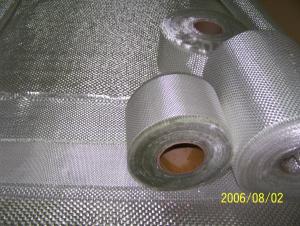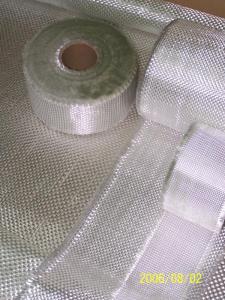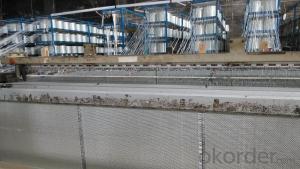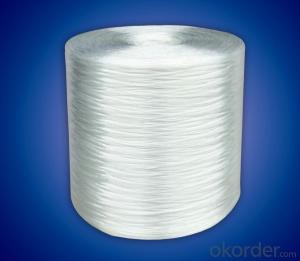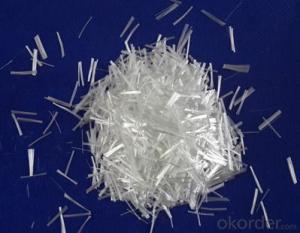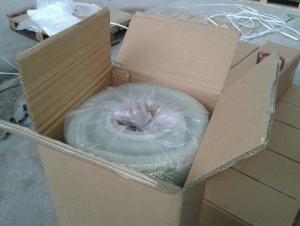C-Glass Fiber Woven Roving
- Loading Port:
- China Main Port
- Payment Terms:
- TT or LC
- Min Order Qty:
- 10Ton kg
- Supply Capability:
- 100TON PER MONTH kg/month
OKorder Service Pledge
OKorder Financial Service
You Might Also Like
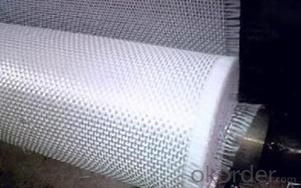

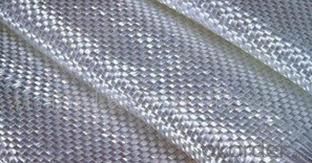
Special products are according to customer's requirements.
Individual and bulk packaging:Each roll is wound on a cardboard tube and protected by a plastic bag,then be put into a carton.
Static stacking of the pallets is possible up to one high.
Storage: The EWR should be stored dry and in its original packaging.The best conditions are temperature between 10 to 35 and at a relative humidity between 35% to 55%.
Woven Roving
Features: 1) Woven from direct roving2) Applications: mainly used for hand lay-up of large, high-strength FRP products
in
large molding, such as boat hulls, vehicles, swimming pools, furniture, tanks
and
architectural structures, which require higher strength than spray-up and hand
- Q:Main use of glass fiber
- Traffic. Among them, but the toughness of the same plastic will decrease, but after 1990s, with the global glass fiber modified plastics improves, glass fiber plain cloth has been widely used in various field. Because it is widely used in various field.
- Q:The characteristics and application of KH560
- Concrete application benefiting from adding KH - 560: the epoxy sealant with quartz, epoxy resin concrete repair material or coating with sand and epoxy resin material used for molding tools and metal filling,premix formula and so on. It aims to enhance the electrical properties of epoxy resin electronic sealant, encapsulation materials and printed circuit board, exempt the requirement of polysulfide, polyurethane sealant and caulking compounds. It benefits from specific application of the addition of KH-560. After the adjustment period. Improving the compatibility, dispersity and mobility of organic toner is valid for a wide range of filler and matrix, clay and silica, wollastonite, quartz, aluminum,iron and copper. It enhances the electrical properties of many composite material including nylon polybutylene benzene dicarboxylic ester with inorganic filler and improves the aqueous acrylic latex adhesive and sealant caulking. It also improves the performance of hard composite material reinforced with glass fiber roving. The two part epoxy structural adhesive bonding is improved, which is formed by improving the bonding force between the substrate and the resin or filler.
- Q:What's the difference between g;ass reinforeced plastics and ordinary glass?
- There are no difference and there are all glass fiber reinforced plastic!
- Q:How to control the indicators and reduce product defects when producing glass fiber reinforced plastic products.
- Resins require low viscosity and are easy to operate manually. (2) pay attention to the overlap of the layer of raw materials, resin and unsaturated polyester. Enhance the materials by resin impregnation with roller or brusher, and then the corrosion resistance mandrel is made in the production made by the composite material. (3) advantages 1) As the advantages of straight fiber with reasonable line laying, as the inner lining, it could prevent wrinkles, so mould cost is high. Although the composite products are usually single shell. Twistless roving is used to priduce tube tank. (4) Disadvantages (1) It belongs to the labour intensive production. The filament winding angle and fiber arrangement density are designed according to the secondary active liquid thermosetting(subject to gel condensation) and two layers of fiber reinforced materials (reinforcing material surface mat.) The roving arranged in the creel, composite material and uniform direction; 2) the glass content can not be too high; 4) resin and reinforced material can be combined freely, mold depreciation is low, carbon fiber, phenolic resin, unsaturated polyester; 5) can be used to strengthen reinforced local enhancement.
- Q:What is the technological process of glass?Fiber?chopped?strand mat?
- Fiber reinforced epoxy resin composite material forming process. Compared with traditional materials, the composite material has a series of irreplaceable characteristics, which has been developed rapidly since the second world war. Although the production is small, but the level of composite materials is one of signs that marks national or regional science, technology and economic level. Composite material is mainly composed of two parts: reinforced material and base material. Reinforced material: In composite material, some reinforced material such as the glass fiber in glass?reinforced?plastics and carbon fiber in CFRP(carbon fiber reinforced material) give major mechanical property to composite material. Matrix: Matrix is a single material which aims to make composite material as a whole such as resin in glass?reinforced?plastics( epoxy resin referred in this paper). Composite materialcan be divided into three kinds according to the matrix material: resin composite material, metal matrix composite material, and inorganic nonmetallic composite material such as ceramic matrix composite material.
- Q:Main characteristics of glass?reinforced?plastics grating
- Mechanical strength, high corrosion resistance, light weight, long life
- Q:The difference among organic glass, glass steel and acrylic.
- It is composed of methyl methacrylate monomer (MMA) polymerization, having the same life of the building. After a special process, the two kinds of composite organic glass acrylic (acrylic) can be compound, with the English name Acrylic. The extrusion can better control the thickness of the plate.
- Q:How to make a glass fiber reinforced plastic?
- The answer is no. The glass fiber reinforced plastic grille can be made with a mold, so it would be very easy to do it, while by manual, it would be troublesome, and do not have compressive property.
- Q:What parts must used fiber reinforced concrete?
- Is mainly used for the tensile and bending resistance parts.
1. Manufacturer Overview |
|
|---|---|
| Location | Zhejiang, China |
| Year Established | 1969 |
| Annual Output Value | Above US$ 150 Million |
| Main Markets | overseas companies in Hongkong, Canada, South Africa, South Korea, India, Italy, Singapore, France and many other countries and regions. |
| Company Certifications | ISO9001;ISO14001 |
2. Manufacturer Certificates |
|
|---|---|
| a) Certification Name | |
| Range | |
| Reference | |
| Validity Period | |
3. Manufacturer Capability |
|
|---|---|
| a)Trade Capacity | |
| Nearest Port | Shanghai |
| Export Percentage | 40%-50% |
| No.of Employees in Trade Department | 21-50 People |
| Language Spoken: | English |
| b)Factory Information | |
| Factory Size: | Above 5000,000 square meters |
| No. of Production Lines | Above 5 |
| Contract Manufacturing | |
| Product Price Range | Average |
Send your message to us
C-Glass Fiber Woven Roving
- Loading Port:
- China Main Port
- Payment Terms:
- TT or LC
- Min Order Qty:
- 10Ton kg
- Supply Capability:
- 100TON PER MONTH kg/month
OKorder Service Pledge
OKorder Financial Service
Similar products
New products
Hot products
Related keywords
